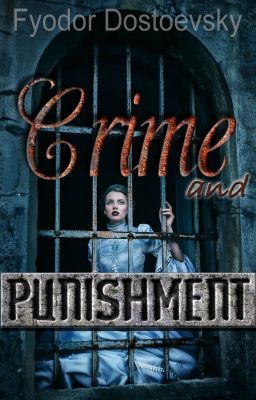Classics
27 stories
JaneAusten
- Reads 211,577
- Votes 6,156
- Parts 32
Northanger Abbey follows seventeen-year-old Gothic novel aficionado Catherine Morland and family friends Mr. and Mrs. Allen as they visit Bath. It is Catherine's first visit there. She meets new friends, such as Isabella Thorpe, and goes to balls. Catherine finds herself pursued by Isabella's brother, the rough-mannered, slovenly John Thorpe, and by her real love interest, Henry Tilney. She also becomes friends with Eleanor Tilney, Henry's younger sister. Henry captivates her with his view on novels and his knowledge of history and the world. General Tilney (Henry and Eleanor's father) invites Catherine to visit their estate, Northanger Abbey, which, from her reading of Ann Radcliffe's Gothic novel The Mysteries of Udolpho, she expects to be dark, ancient and full of Gothic horrors and fantastical mystery.
JaneAusten
- Reads 10,387,438
- Votes 221,400
- Parts 61
The story follows the main character Elizabeth Bennet as she deals with issues of manners, upbringing, morality, education, and marriage in the society of the landed gentry of early 19th-century England. Elizabeth is the second of five daughters of a country gentleman living near the fictional town of Meryton in Hertfordshire, near London.
EdgarAllanPoe
- Reads 21,683
- Votes 1,102
- Parts 1
"The Tell-Tale Heart" is a short story by American writer Edgar Allan Poe, first published in 1843. It is relayed by an unnamed narrator who endeavors to convince the reader of his sanity while simultaneously describing a murder he committed. The victim was an old man with a filmy "vulture-eye", as the narrator calls it. The narrator emphasizes the careful calculation of the murder, and he hides the body by dismembering it, and hiding it under the floorboards. Ultimately, the narrator's feelings of guilt, or a mental disturbance, result in him hearing a thumping sound, which he interprets as the dead man's beating heart.
Cover by the lovely @FayLane.
xJoannaxt
- Reads 32,328
- Votes 440
- Parts 24
The Scarlet Letter: A Romance is an 1850 work of fiction in a historical setting, written by Nathaniel Hawthorne, and is considered to be his magnum opus.
CharlotteBronte
- Reads 1,869,917
- Votes 25,005
- Parts 41
"Jane Eyre" follows the emotions and experiences of its eponymous character, including her growth to adulthood, and her love for Mr. Rochester, the byronic master of fictitious Thornfield Hall.
EdgarAllanPoe
- Reads 19,016
- Votes 1,702
- Parts 1
"Annabel Lee" is the last complete poem composed by American author Edgar Allan Poe. Like many of Poe's poems, it explores the theme of the death of a beautiful woman.
Cover by: @KatrinHollister
FydorDostoevsky
- Reads 94,411
- Votes 2,343
- Parts 42
Crime and Punishment is a novel by the Russian author Fyodor Dostoevsky. It was first published in the literary journal 'The Russian Messenger' in twelve monthly installments during 1866. Later, it was published in a single volume. It is the second of Dostoevsky's full-length novels following his return from 5 years of exile in Siberia. Crime and Punishment is considered the first great novel of his "mature" period of writing.
Crime and Punishment focuses on the mental anguish and moral dilemmas of Rodion Raskolnikov, an impoverished ex-student in Saint Petersburg who formulates a plan to kill an unscrupulous pawnbroker for her money. Before the killing, Raskolnikov believes that with the money he could liberate himself from poverty and go on to perform great deeds; but confusion, hesitation, and chance muddy his plan for a morally justifiable killing.
Cover made by the amazing Amber @The3dreamers.
CharlesDickens
- Reads 74,560
- Votes 2,226
- Parts 66
The story traces the life of David Copperfield from childhood to maturity. David was born in Blunderstone, Suffolk, near Great Yarmouth, Norfolk, England, in 1820, six months after the death of his father. David spends his early years with his mother and their housekeeper, Peggotty. When he is seven years old, his mother re-marries Edward Murdstone. David is given good reason to dislike his stepfather and has similar feelings for Murdstone's sister Jane, who moves into the house soon afterwards. Murdstone thrashes David for falling behind in his studies. Following one of these thrashings, David bites him and soon afterwards is sent away to a boarding school, Salem House, with a ruthless headmaster, Mr. Creakle. There he befriends James Steerforth and Tommy Traddles.
AlexandreDumas
- Reads 13,851
- Votes 411
- Parts 60
Alexandre Dumas elaborated on the story in the novel The Vicomte of Bragelonne: Ten Years Later, the final installment of his D'Artagnan saga: here the prisoner is forced to wear an iron mask and is Louis XIV's identical twin.
Dumas also presented a review of the popular theories about the prisoner extant in his time in the chapter "L'homme au masque de fer" in the sixth volume of his Crimes Célèbres.
AlexandreDumas
- Reads 206,508
- Votes 3,892
- Parts 66
The Three Musketeers (French: Les Trois Mousquetaires) is a novel by Alexandre Dumas, which recounts the adventures of a young man named d'Artagnan after he leaves home to travel to Paris, to join the Musketeers of the Guard. D'Artagnan is not one of the musketeers of the title; those are his friends Athos, Porthos and Aramis, inseparable friends who live by the motto "all for one, one for all" ("tous pour un, un pour tous").









